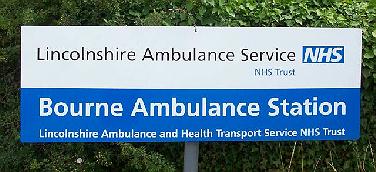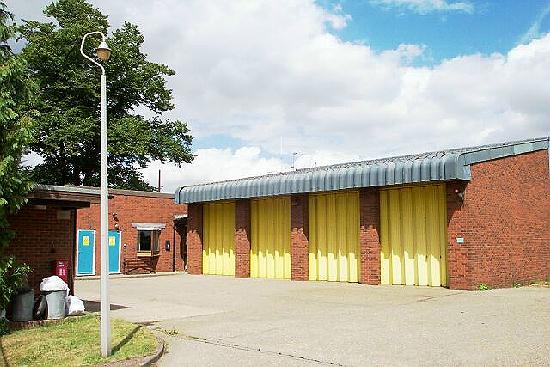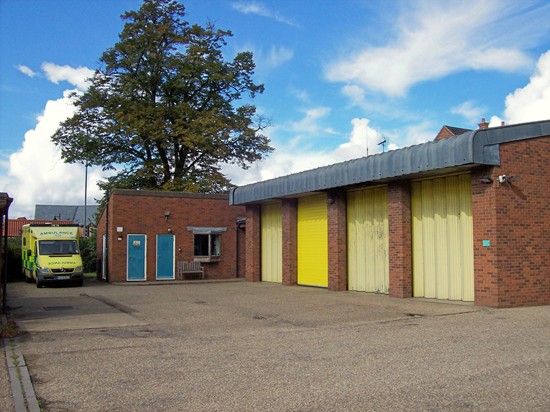|
Bourne
ambulance
service |
 |
The word ambulance comes from the
Latin ambulare meaning to go and is used today
to denote a vehicle designed
to take the disabled in battle or civil life to hospital or in which they
are treated in default of hospital wards. It was invented by Baron
Jean Dominique Larrey (1766-1842), a French surgeon, and introduced in the
late 18th century with the fervent support of Napoleon who used the
"flying ambulance service" during his campaigns from 1797.
Improvements were made and a corps of
stretcher bearers organised to operate with the ambulances. The British
did not begin to use the idea until after the Crimean War of 1854-56 and
other powers subsequently adopted the system. Under the Geneva Convention
of 1864, this method of first aid was given neutral protection.
The ambulance wagon, as it was known, used
during the First World War of 1914-18, was a canvas covered vehicle marked
with the Geneva cross and constructed to hold four stretchers and six men
seated. It was light and adaptable for quick transport and became the
forerunner of the ambulances we know today.
A civil ambulance association was first
organised in England in 1878 by the Knights of St John and this society
also provided training in first aid in order that assistance might be at
hand for those who sustained injuries in civil life. The success of the
enterprise led to the formation of ambulance corps in all parts of the
country with policemen, railwaymen and factory employees holding
certificates of the association and since then, the evolution of ambulance
work has been rapid and notably successful.
The ambulance service in Bourne began
eighty years ago at the Butterfield Hospital which had opened in 1910. It
those early days it was run by the St John Ambulance Brigade after the
Bourne division had been set up following a public meeting called in 1931
by general practitioner Dr John Galletly and John Reade, manager of Lloyds
Bank, to recruit support for first aid classes and to man a recently
acquired ambulance that had been consigned to the town for use in
emergencies.
The response was so good that 40 names were handed in and the new
organisation was formed. By March of that year, 30 members had passed
their preliminary examinations in first aid procedures and Edgar Judge,
the North Street chemist, was appointed ambulance officer.
Once qualified through the examination procedure, the men were assigned to
ambulance duties when required but these did not always run smoothly. The
first patient to be conveyed in the Bourne ambulance was Mr F North of
Mill Drove who was placed on a stretcher which was then loaded into the
back and the ambulance set off for the Butterfield Hospital, a short
journey to the end of North Street, but as it was crossing the gutter, the
vehicle bounced and the back doors swung open.
The stretcher started to slide out of the back but one of the attendants
managed to stop it before it deposited its patient in the street. Mr North
recovered from the indisposition which needed the ambulance journey to
hospital and never held a grudge for the mishap. In 1936, when the brigade
marked its fifth anniversary, he gladly accepted an invitation to the
celebration dinner and even responded to the toast to "The Visitors".
There were other embarrassing incidents and on one occasion, when the
ambulance was called out to collect a man having a fit, the attendants
found that a crowd of bystanders were already rendering assistance and
everyone present insisted on lending a hand when he was lifted into the
vehicle, some even climbing inside to put him on the stretcher. The
attendant closed the doors and the ambulance sped off to hospital, taking
with it half a dozen of the enthusiastic helpers.
After those early days, the scope of the brigade was widened and its
members became more proficient and when the ambulance service was
eventually taken over by Kesteven County Council, they continued to carry
out voluntary work as well as report for duty as attendants when needed.
The ambulance service was taken over by Lincolnshire County Council during
the reorganisation of local government in 1974 and by this time an
ambulance station had been established at the corner of Queen's Road and
Harrington Street which remained the location until November 1979 when the
brick and asbestos building was extensively damaged by a serious fire in
which a young mechanic lost his life.
The station was subsequently moved to the
grounds of Bourne Hospital alongside the A15 in South Road where a purpose
built four bay building was erected in 1980 and run by the Lincolnshire
Ambulance Service (NHS Trust). The hospital closed in 1998 and the site
sold for housing development in the summer of 2003 when the hospital
complex was demolished to make way for new houses although the ambulance
station remained tucked away in one corner, run by the East Midlands
Ambulance Service (NHS Trust) following the regionalisation of ambulance
trusts in England in June 2006, an amalgamation of several other services
and covering a population of 4.8 million people in six counties.
The service currently employs over 3,200 staff at more than 70 locations,
including two control rooms at Nottingham and Lincoln, with the largest
group being accident and emergency personnel whose crews respond to over
670,000 emergency calls every year (2011 figures) although there has been
concern in many areas that people in the county
may be seriously disadvantaged by the timescale record for ambulance
turnouts which were the lowest in the country.
In the autumn of 2012, this vast
undertaking was the subject of reorganisation proposals that involved the
closure of the Bourne ambulance station to be replaced by local standby
points at Morton in the north and Market Deeping in the south where
ambulances will park at the roadside and wait between calls, a system that
has been widely condemned and is now the subject of a public consultation
with a final decision being made early in 2013.

|
THE AMBULANCE SERVICE
The East Midlands Ambulance Service NHS Trust (EMAS)
provides emergency 999, urgent care and patient transport services
for an estimated 4.8 million people within Derbyshire,
Leicestershire, Rutland, Lincolnshire (including North and North
East Lincolnshire), Northamptonshire and Nottinghamshire.
It employs over 3,200 staff at more than 70 locations, including two
control rooms at Nottingham and Lincoln, with the largest staff
group being accident and emergency personnel.
Accident and emergency crews respond to over 670,000 emergency calls
every year (2011 figures), while the Patient Transport Service (PTS)
and volunteer ambulance car drivers provide care and transport on
over 5,000 journeys to and from routine appointments each day. The
Community Paramedics and Emergency Care Practitioners have enhanced
skills, meaning that more and more people can be treated in their
own homes if a hospital visit is not required. |
|
THE AMBULANCE STATION TODAY |
|
 |
REVISED NOVEMBER 2012
See also
The ambulance
station fire of 1979
George Ernest Robinson

Go to:
Main Index Villages
Index
|


